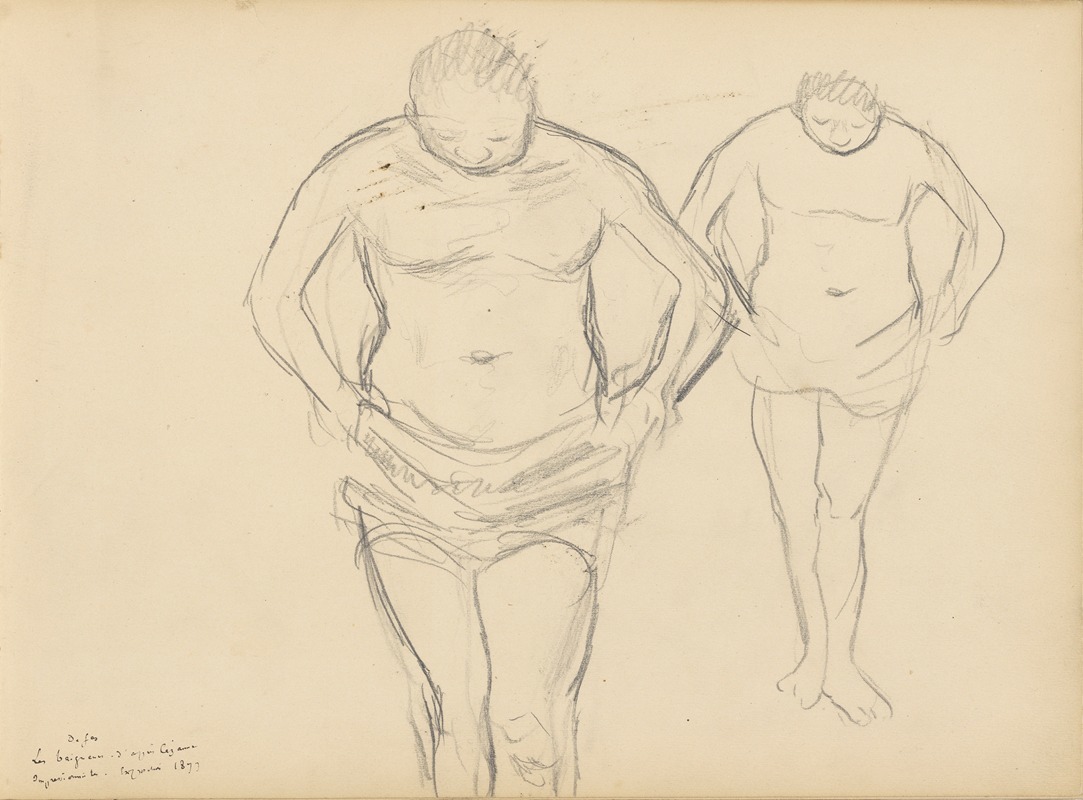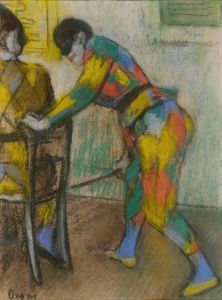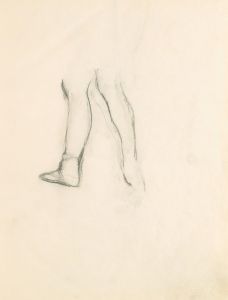
Copies of Cézanne’s Bathers
A hand-painted replica of Edgar Degas’s masterpiece Copies of Cézanne’s Bathers, meticulously crafted by professional artists to capture the true essence of the original. Each piece is created with museum-quality canvas and rare mineral pigments, carefully painted by experienced artists with delicate brushstrokes and rich, layered colors to perfectly recreate the texture of the original artwork. Unlike machine-printed reproductions, this hand-painted version brings the painting to life, infused with the artist’s emotions and skill in every stroke. Whether for personal collection or home decoration, it instantly elevates the artistic atmosphere of any space.
Edgar Degas, a prominent French artist known for his contributions to Impressionism, created "Copies of Cézanne’s Bathers" as part of his exploration of the works of other artists. This piece reflects Degas's admiration for Paul Cézanne, another influential figure in the development of modern art. Cézanne's original "Bathers" series is renowned for its innovative approach to form and color, which significantly impacted the trajectory of 20th-century art. Degas's decision to create copies of Cézanne's work highlights the interconnectedness of artists during this period and their mutual influence on each other's styles and techniques.
Degas, primarily recognized for his depictions of dancers and everyday scenes, was also deeply interested in the works of his contemporaries and predecessors. His engagement with Cézanne's "Bathers" demonstrates his appreciation for Cézanne's unique approach to composition and his ability to capture the human form in a natural setting. By replicating Cézanne's work, Degas not only paid homage to the original artist but also engaged in a form of artistic dialogue, allowing him to explore and internalize Cézanne's methods.
The "Bathers" theme was a popular subject in 19th-century art, with many artists exploring the human figure in natural landscapes. Cézanne's interpretation of this theme was particularly groundbreaking due to his use of geometric shapes and a distinctive color palette, which departed from the more traditional representations of the human body. Degas's copies of these works suggest a deep engagement with these elements, as he sought to understand and perhaps reinterpret Cézanne's vision through his own artistic lens.
Degas's copies are not mere reproductions but rather reinterpretations that reflect his own artistic sensibilities. While maintaining the essence of Cézanne's compositions, Degas infused his copies with his characteristic attention to detail and movement. This blend of Cézanne's structural innovation with Degas's dynamic style results in works that are both respectful of the original and uniquely Degas's own.
The practice of copying works by other artists was not uncommon during Degas's time. It was a method of study and a way for artists to refine their techniques by engaging directly with the works of those they admired. For Degas, copying Cézanne's "Bathers" would have been an exercise in understanding the complexities of form and color that Cézanne mastered. This practice allowed Degas to expand his own artistic repertoire and contribute to the ongoing evolution of modern art.
Degas's engagement with Cézanne's work is a testament to the collaborative and interconnected nature of the art world during the late 19th and early 20th centuries. Artists like Degas and Cézanne, though distinct in their styles, shared a common goal of pushing the boundaries of traditional art and exploring new ways of seeing and representing the world. Through works like "Copies of Cézanne’s Bathers," Degas not only celebrated the achievements of his contemporaries but also participated in the broader dialogue that would shape the future of art.


















